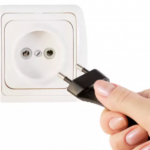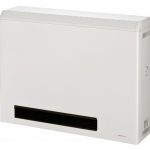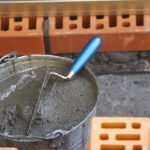Even if the tiles in the bathroom were laid by sufficiently qualified craftsmen and used the best silicone sealants with finely porous texture, this cannot guarantee protection against mold, due to which a dirty coating appears at the joints between the tiles and black dots.

In the joints between the tiles there are a lot of microscopic depressions, where over time, dust, dirt, moisture, soap naturally settle, this is an ideal environment for the development of the fungus. Therefore, it is better to adopt simple quick ways to clean these seams without the help of specialists.

The easiest and cheapest way, of course, is to use soda, which many housewives use to clean various surfaces. In this case, you need a large brush to clean the bathroom, an unnecessary toothbrush and, accordingly, soda. The seams should be washed with water, apply a dense layer of soda on them, leave them to get drunk with moisture for a couple of minutes, and then clean them thoroughly with a toothbrush. To get rid of plaque on the tile at the same time, you can pour soda on a large brush and walk around the tile, which will also give an additional antibacterial effect. After that, it is enough to wash everything off with a stream of water.

Many successfully deal with dirt at the joints with a mixture of soda and 9 percent vinegar in a ratio of 50/50. With this solution you need to soak all the seams or spray it from the bullet machine, wait 5 minutes, then walk along the seams with a stiff brush and rinse everything with water.

An effective and long-term result is that of conventional hydrogen peroxide. In this case, it is important that this is a good, but at the same time non-aggressive antiseptic that does not require rinsing and in the future does not allow the fungus to develop in the joints. To prepare a cleaning solution, you need to mix peroxide and water in a 1: 2 ratio, process the seams with it and leave them to dry. The only limitation with this method is the presence of only minor contaminants. If there are serious stubborn stains, then peroxide will not help here, it will need to be used for started one of the two above methods, and use peroxide when the pollution is not so neglected.

Once the contamination problem has been resolved, it is recommended to use sealant. It allows you to close all micropores in the surface of the seam. Also, do not forget about regular ventilation in the bathroom and wiping the tiles with a dry cloth or towel after getting wet or forming condensation. If any individual small spots are noticed, it is better to process them with a special store pencil, which is able to eliminate any mold and fungus in small areas.




-
 Why does the socket not let in the plug of the appliance?
Why does the socket not let in the plug of the appliance?
-
 What ventilation should actually be in accordance with GOST
What ventilation should actually be in accordance with GOST
-
 What is the danger of installing an air conditioner on a bearing wall?
What is the danger of installing an air conditioner on a bearing wall?
-
 Soundproofing and soundproofing of plastic windows
Soundproofing and soundproofing of plastic windows
-
 Is it profitable to turn off the power supply and switch to your
Is it profitable to turn off the power supply and switch to your
-
 How to make a primer from bitumen mastic
How to make a primer from bitumen mastic
-
 What difficulties can arise when combining tiles of different sizes
What difficulties can arise when combining tiles of different sizes
-
 Top 5 Reasons Why Throwing Sawdust Out
Top 5 Reasons Why Throwing Sawdust Out
-
 Will storage heaters help reduce electricity consumption?
Will storage heaters help reduce electricity consumption?
-
 What types of lamps are much better than LED
What types of lamps are much better than LED
-
 Why was ash added to the mortar in masonry before
Why was ash added to the mortar in masonry before
-
 The formation of cracks in the logs of the log house, because of what they appear and how to deal with it
The formation of cracks in the logs of the log house, because of what they appear and how to deal with it
New publications are published daily on our channel in Yandex. Zen
Go to Yandex. Zen


